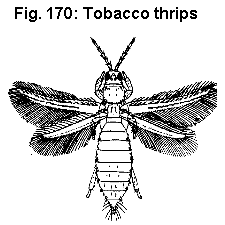 Fig. 170: Tobacco Thrips, adult. Frankliniella
fusca (Hinds), Thripidae, THYSANOPTERA
Fig. 170: Tobacco Thrips, adult. Frankliniella
fusca (Hinds), Thripidae, THYSANOPTERA Return to: CFREC Home Page
Adult- The female tobacco thrips is dark brown or black, slender, and about 1 mm long. Each 8-segmented antenna has several yellowish middle segments; the rest of the segments are much darker. Males are usually yellow.
Egg- The white egg cannot usually be seen because it is inserted into the plant tissue.
Larvae- Both stages of tobacco thrips larvae are very light yellow.
Prepupa and Pupa- After the larval stages, tobacco thrips develop through two resting stages, the prepupa, and pupa. Each stage is yellowish and sluggish. These stages are spent in a close hiding place, usually on the ground. The antennae are directed toward the front of the insect in the prepupal stage and are held back over the head and thorax in the pupal stage.
 Fig. 170: Tobacco Thrips, adult. Frankliniella
fusca (Hinds), Thripidae, THYSANOPTERA
Fig. 170: Tobacco Thrips, adult. Frankliniella
fusca (Hinds), Thripidae, THYSANOPTERA
Distribution- This thrips is found throughout the United States and Canada east of the Rocky Mountains.
Host Plants- Many plants are attacked by the tobacco thrips, especially gladioli, many ornamentals, cotton, and peanuts.
Damage- Plants infested with tobacco thrips have silvery outlines traced around the veins, and if the darnage is severe, the leaves become yellow. These thrips also leave small black spots on the underside of the leaves.
Life History- In greenhouses and on field-grown flowers, the tobacco thrips is most often found in the fall. This insect is often mistaken for the much more destructive gladiolus thrips; however, the tobacco thrips adult is larger and the antennae are lighter in color than those of the gladiolus thrips.
As is common for many thrips, the tobacco thrips can reproduce parthenogenetically, but males are usually present. Eggs are inserted completely into the leaves. In 6 days the eggs hatch into active young. Two larval stages, a prepupal and a pupal stage, occur within 2 weeks. An entire life cycle can be completed in about 18 days. Adult thrips live 3 to 5 weeks, and each female deposits about 55 eggs during this time. The adults will have either long or short wings. The longwinged forms usually appear in late spring outside and migrate to a new host. Outside, the tobacco thrips overwinter as shortwinged adults in sheltered areas. Excessively rainy conditions reduce the thrips population. Usually the tobacco thrips are not found grouped together in folded leaves or under the bracts of the flower spikes as are gladiolus thrips.
For specific insecticides and rates, consult current Cooperative Extension Service publications on ornamental plant pests.
University of Florida/IFAS Reference to Pest Control Guides